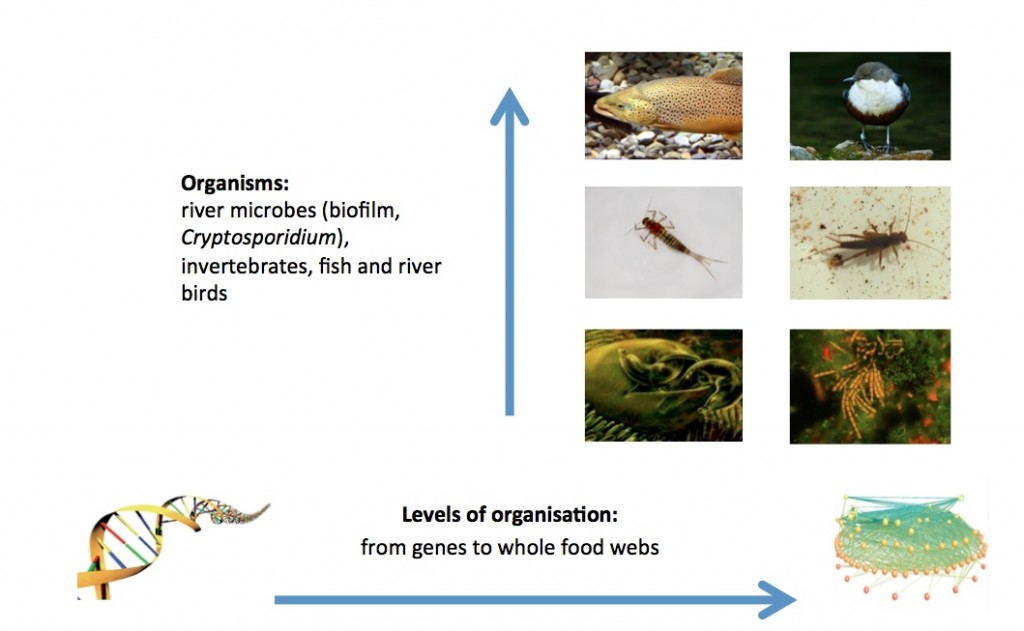DURESS is addressing a breadth of organisms and levels of organisation. Work on whole food webs ranges from microbes in benthic biofilms, through aquatic invertebrates as prey and predators, up to the main apex predators such as salmonid fish and river birds. Levels of organisation range also from genes, as potentially indicators of diversity and resilience, to whole food webs. Many data are being newly collected, but DURESS also builds on extensive long-term data from prior work. This includes, for example, microsatellites for the invertebrates, food-web monitoring using stable isotope signatures at Llyn Brianne since 2005, and annual assessments of invertebrate assemblages here since 1981. A further novel addition is assessment of the distribution of the waterborne protozoan Cryptosporidium in relation to catchment land use.

